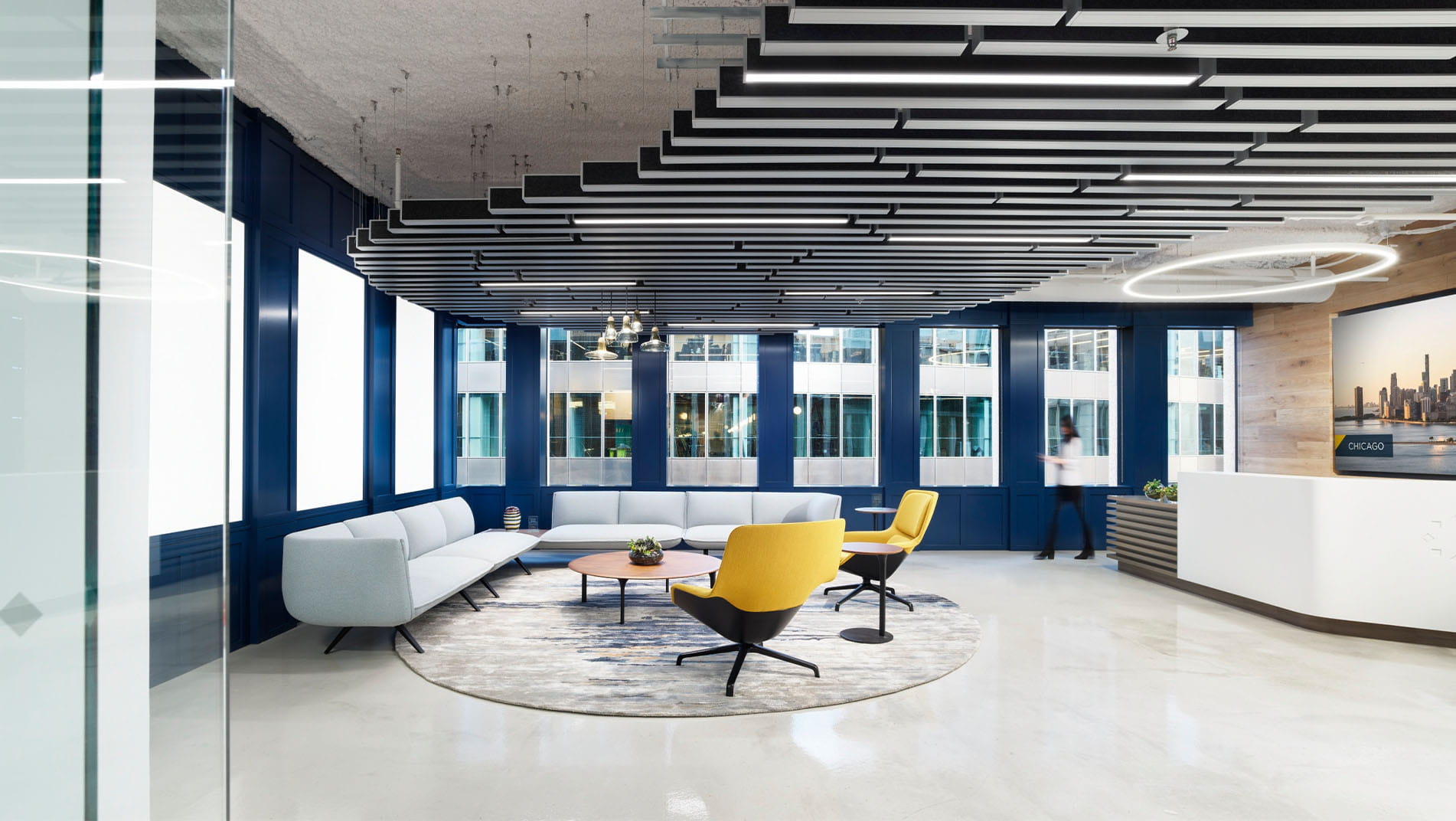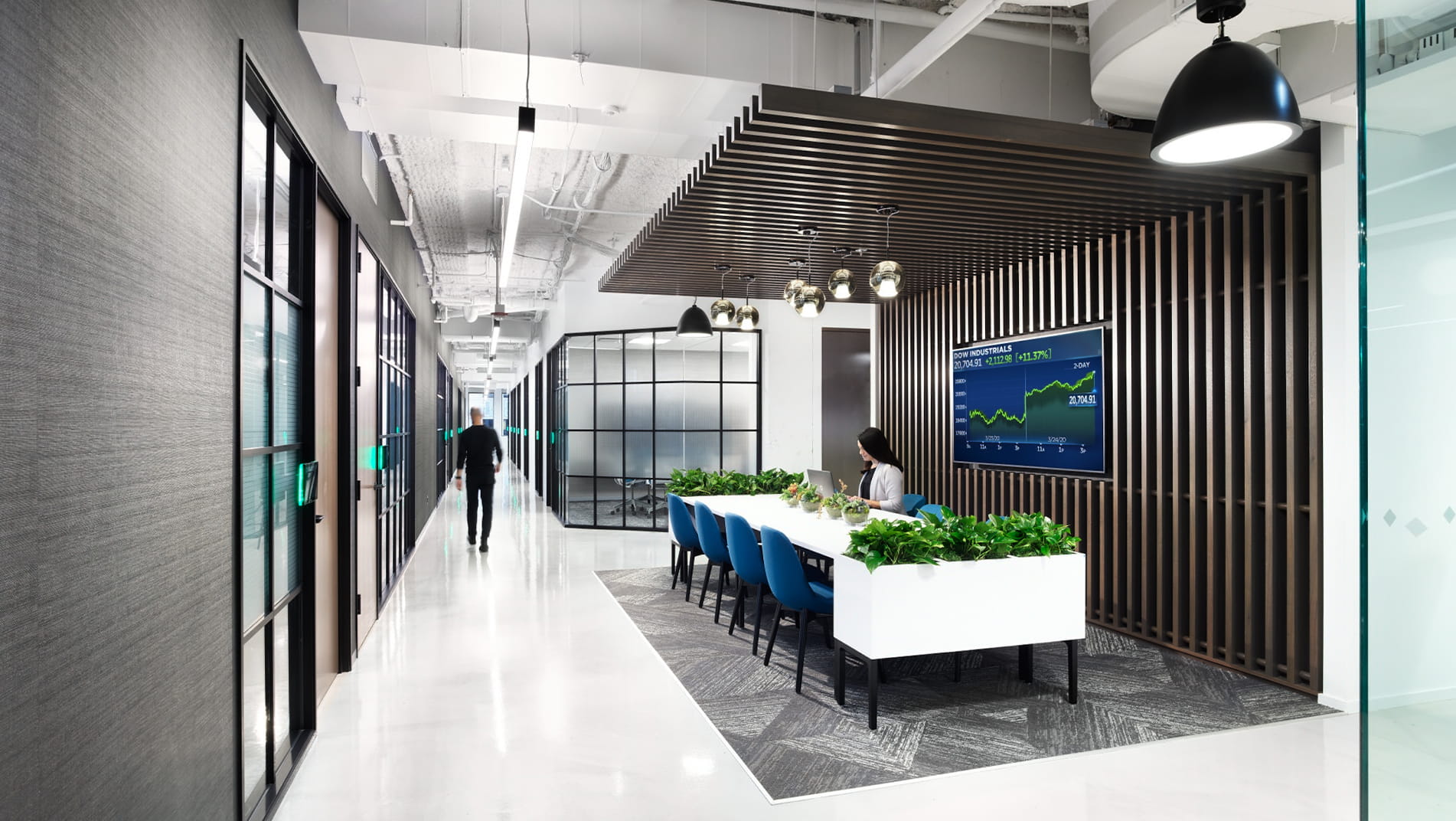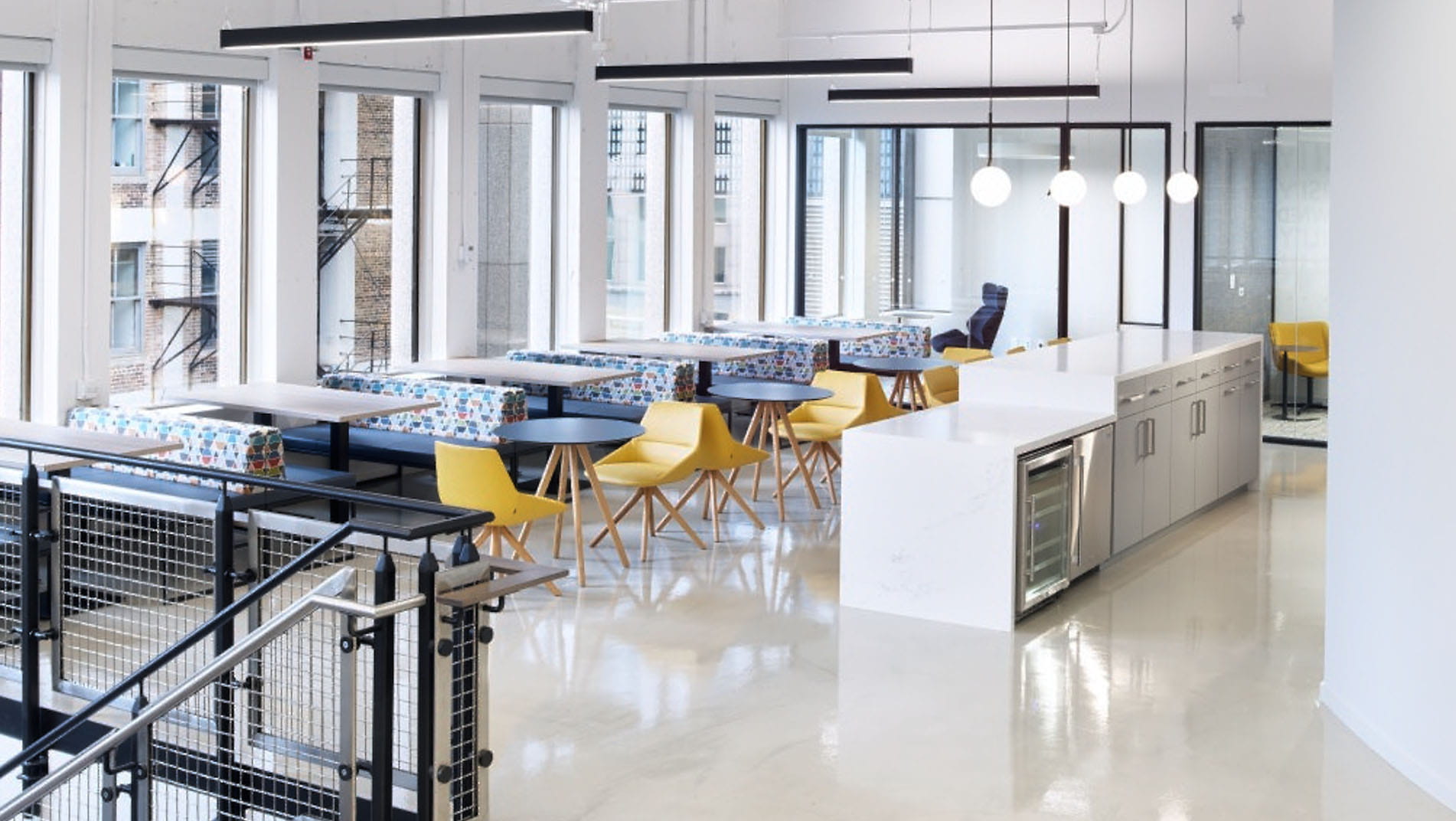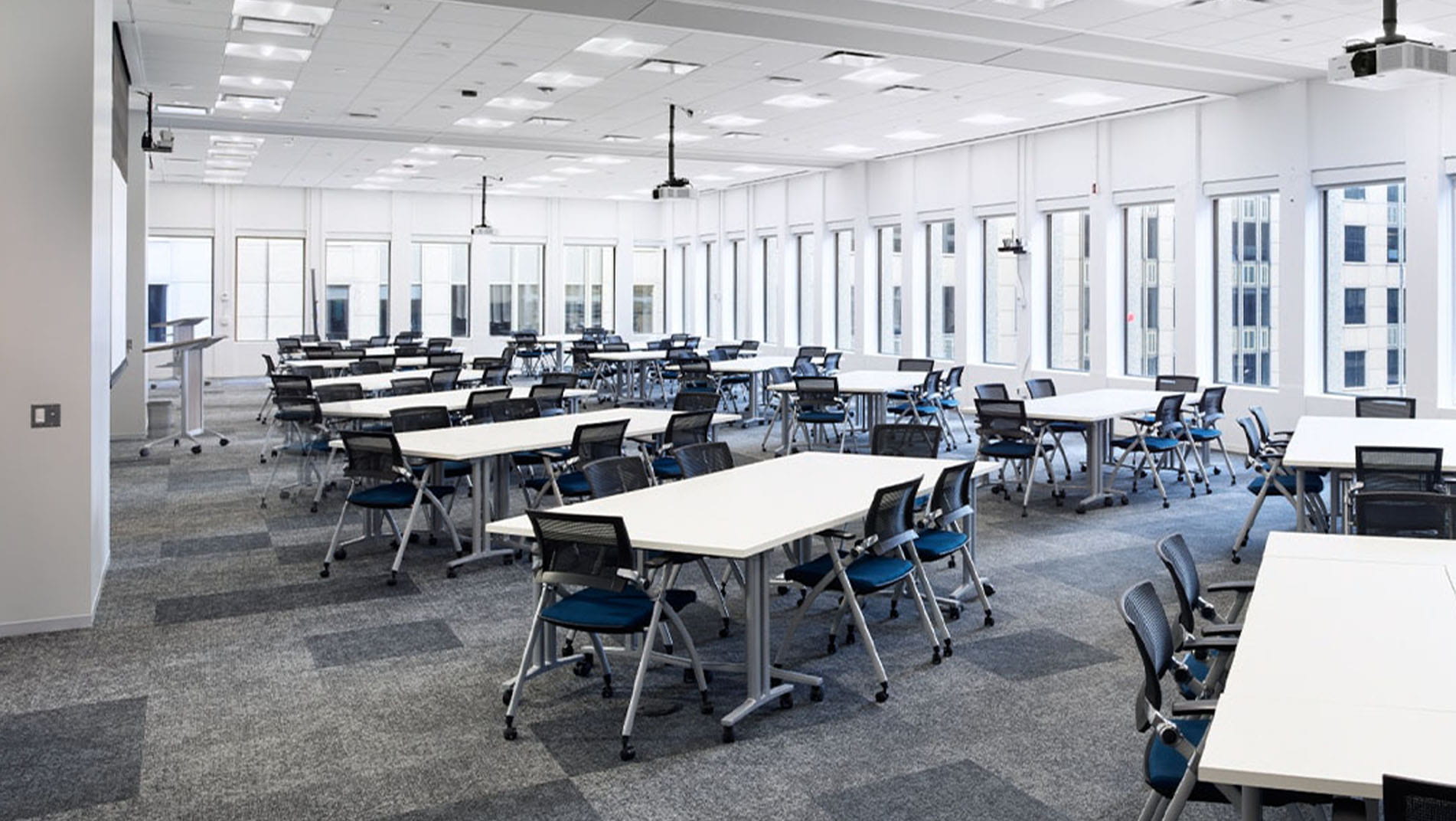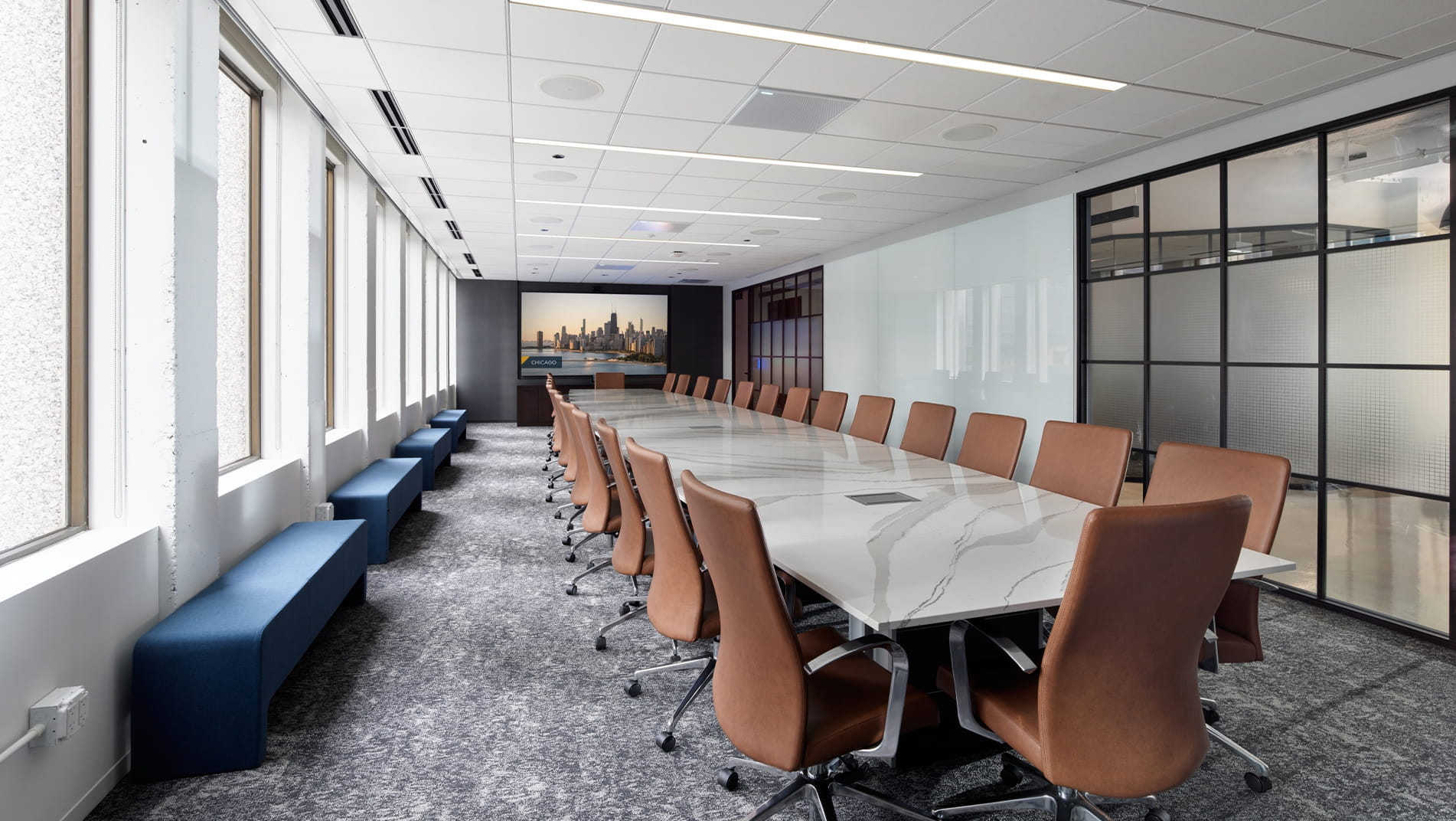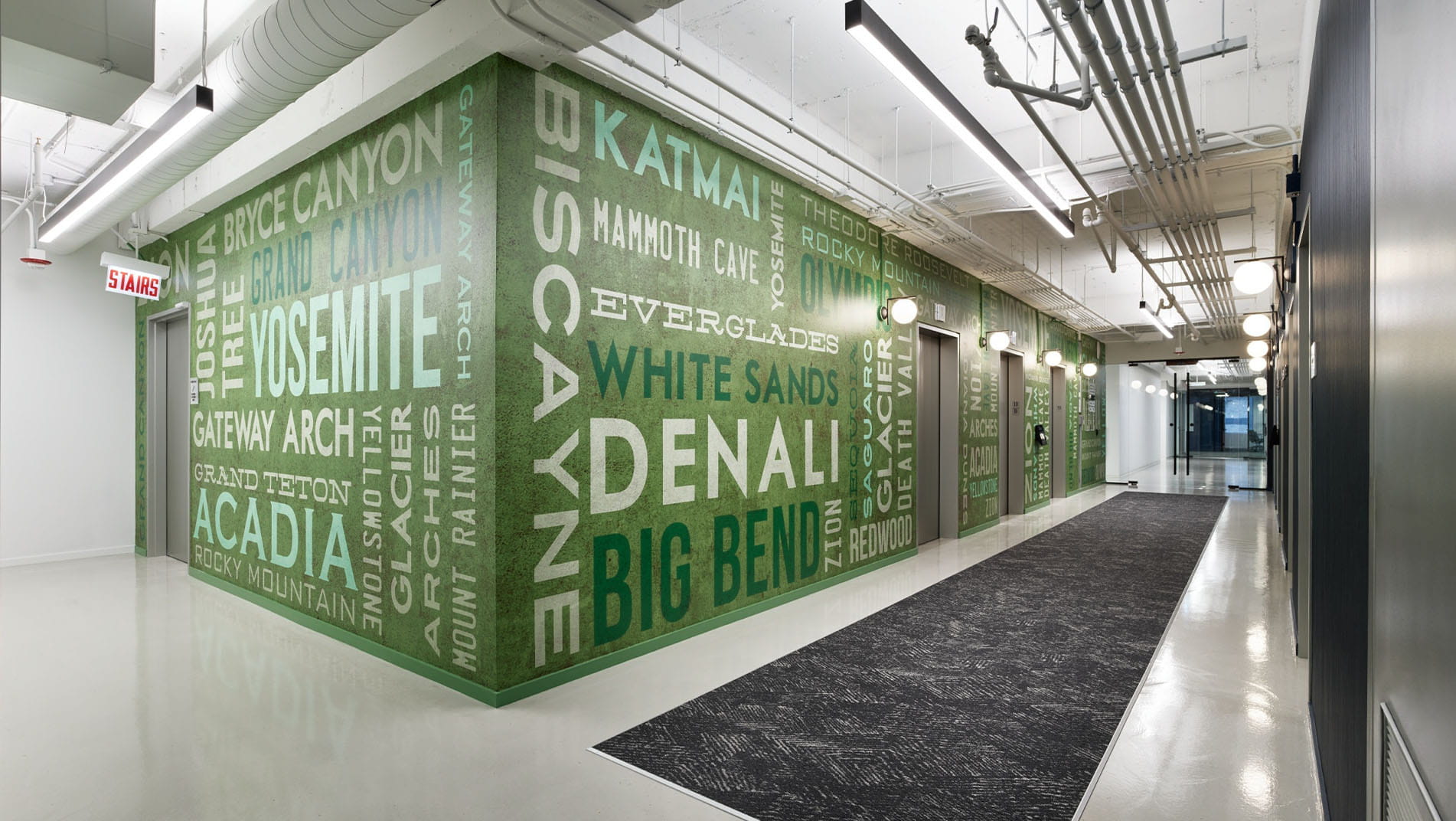Q&A with Tom Hulsebosch: Reopening West Monroe's Chicago office and the future of hybrid consulting work
Chicago office lead Tom Hulsebosch discusses West Monroe’s decision to open and how our team is approaching a return to our new space
West Monroe, a national business and technology consultancy, recently reopened its Chicago office in a new space at 311 W. Monroe. In October 2019, the firm announced that it signed a 12-year lease.
The Chicago office is West Monroe’s largest office and corporate headquarters. The new space—at 208,000 square feet, twice the size of its previous office at 222 W. Adams—is designed to accommodate projected doubling of the firm’s local workforce by 2024.
Chicago is one of three West Monroe offices—along with New York City and Minneapolis—that moved to a new space during 2020.
In this Q&A, Tom Hulsebosch, senior managing director and Chicago office lead, explains the move and shares his thoughts about what the future holds for the Chicago office and consulting.
Why has West Monroe moved to a new and larger office during the pandemic when so many companies are considering making virtual work permanent?
Our office has always been more than just a place to do work. It’s the heart of our award-winning culture and the unique collaboration that differentiates us as an employer and a consulting partner. Our office is also important to our mission to develop the next generation of leaders. It’s where we build relationships, mentor, teach the art of consulting, and create solutions to help our clients with some of their most difficult issues.
We view this as an investment in our culture and competitive advantage—the pandemic didn’t change that.
Remote work has helped us maintain continuity of service and operations, but we consider that to be part of the future, not the future. As we move beyond the pandemic, people may use the office differently, but it will remain the heart of our culture, where we come together and create value for our people and clients. That is why we have chosen not to overcorrect our real estate investments.
How do you expect in-office operations to change post-pandemic?
Being in the office was never mandatory. Our consultants traditionally performed much of their work at client sites, typically returning to the office on Fridays. One of the things that will change is that we will travel less and perform more of our work in our home markets. So, where Mondays through Thursdays used to be light days in the office, I can see a scenario where office usage actually increases on those days.
Regardless, our office should be a place where people want to be when they feel it’s safe for them to do so—because of the energy, the opportunity to connect with colleagues, and the inherent sense of belonging.
But this move isn’t just about quantity of workspace. It’s also about purposeful design for collaboration, innovation, and culture. We began designing our space even before the pandemic, and it’s amazing how the decisions we made in 2019 happened to be the right choices at the right time. This space will take collaboration and digital working to the next level, allowing us to accomplish what’s necessary in a hybrid world.
The new office has LEED Gold certification. Why is that important?
Part of West Monroe’s commitment to our communities is doing our part to ensure the sustainability of the world around us. We strive to make the right environmental choices where we can. Here in Chicago, as with all of our offices, it was a priority for us to be in a building and space with high environmental standards.
Why did you decide to reopen the office? Was there demand from employees?
We moved to our new space at the beginning of our lease in October 2020. But with most of the country in the “red,” our offices remained closed until recently. Our decision to reopen our offices—Chicago included—was based on continuous review of local conditions and governmental mandates in our various markets, as well as our work to ensure that we have appropriate safety protocols in place.
I can say there has been pent-up demand from people who want a change of scenery and a place to focus. Some people get energy by themselves, while others get their energy by being around others. Some have had the benefit of a quiet apartment, while others have been working in homes with constant distractions.
How quickly do you expect it to take for your employees to get back up to speed?
We want to make sure people have a way to reconnect with each other and with West Monroe culture when they feel safe doing so. That said, our approach to reopening is one of “crawl, walk, run.”
Today, we are in the “walk” stage, learning how to operate safely and effectively using the office for collaboration of small teams using our Work.com solution to ensure we have the room to support social distancing. We will move to the “run” stage once there is herd immunity—and at that point, we will be able to focus on getting back to whatever our new normal hybrid work environment looks like, where we can welcome everyone back for both social events and collaboration work.
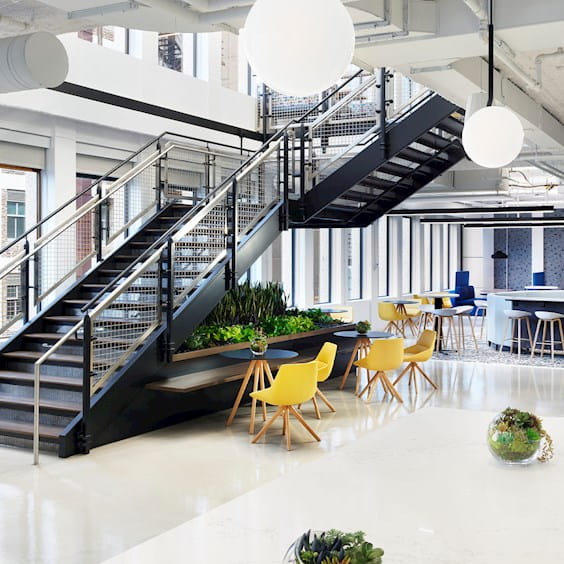
Do you have any guidelines around where to work?
As a people-first organization, we want to meet people where they are. We have no expectation for in-person presence, but we are providing a place to be and work and collaborate for those who are ready for it—whether they want human interaction or a quiet place to work away from distractions—within established capacity requirements. This makes perfect sense for our business until we have herd immunity.
Our people are used to working in locations other than the office, and they are used to being empowered to work where they feel most comfortable. Even when the pandemic is behind us, I see a more flexible, hybrid model remaining a part of the way we work.
What does the reopening look like? How does it feel to be back in the office?
I have spent a good part of this week in the office, and it was my best week in months. The meetings I had felt richer, and there’s a certain energy and excitement around being in a new environment. Even though we aren’t yet using our collaboration spaces as intended, it has been an important emotional boost for people to get out of their homes and see what we’ve created here. We’re excited about moving into this next phase of using our office space for client and business collaboration.
I had a blast trying out the new technology and stereo system. Our internal IT team has done an amazing job setting up our conference rooms. I can hit “join” to launch video calls, no matter which of the 10 different tools (Zoom, Teams, Skype, GotoMeeting, BlueJeans, WebEx, etc.) I need to use. That is light-years ahead of what we had before, and it will be great for enabling collaboration from various locations in a hybrid working environment. We also have great spaces for training and for hosting clients when we are fully back in the office.
We also have some wonderful new amenities in the building such as a bowling alley in the basement. I bowled a game by myself, but it wasn’t pretty—I have some work to do there. Although we are moving with caution, it’s hard not to be excited about the potential for these sorts of spaces over the months and years ahead.
What precautions are in place to ensure safety?
We took our time to work out a reopening process that ensures we are following all state and local procedures—and even more stringent steps in some cases—for the good of our people.
We are using Work.com, an app on the Salesforce platform, to implement health surveys and manage space. Employees use it to answer a few health questions that determine whether they can come into the office. Our HR business partners uses that information for contract tracing. Our operations team uses the app to plan the use of space and assign workspaces.
In the office, we have spaced workstations farther apart, marked corridors as one-way routes, and placed hand sanitizer everywhere. Our building owner/developer, Sterling Bay, also has established various protocols, including enhanced cleaning and limitations on elevator capacity.
What impact has the pandemic had on client service delivery?
Traditionally, our clients have expected us to travel to their sites to perform our work. That is a long-standing part of the consulting lifestyle. Obviously, we have not been able to do that. Many of our clients operate in multiple states and offices, so they are also rethinking their own ability to work in a more distributed manner, so we’ve been learning together how to do the same types of work, such as design or planning workshops, when we are all in different places.
Collaboration through technologies such as Zoom and Microsoft Teams has shown us what is possible in a 100% remote environment—and that the potential is greater than we ever thought. I’m not surprised. We have always prided ourselves on our ability to collaborate. This situation has motivated us to do so at a very rich level—even as we were learning how to work differently.
Has being remote had any drawbacks?
Make no mistake: The 100% virtual environment has been more difficult when creating new relationships and connecting with our clients. Our type of consulting is more difficult, and we are not working less, but more, to get the same results. The time that we have not been traveling has been replaced with more Zoom and Team calls and work with our internal teams and the clients. We don’t believe that the 100% virtual is feasible for our business in the long term.
It’s important that we take advantage of lessons from this period to make a hybrid environment sustainable. How will we maintain high levels of engagement and fulfillment when some people are working in the office, some at the client, and some in other locations? That’s our challenge as we think about our workplace of the future.
How will consulting change in the future?
This may change where we work, but it won’t change what we do as a profession. What it will do is continue to accelerate the transition to digital operations that has already been underway in many aspects of business. The digital story has changed radically over the past year. We are all familiar with digital “products” such as Uber and Lyft and Instacart. Now, we are looking at the digital product version of core business processes. Industries such as utilities, financial services, and healthcare have complex processes that have required some combination of paper, email, and web-based work. The goal now is to transform that work to a single screen—making companies less dependent on physical presence. That is what our digital product studio is doing—helping clients envision new ways to do their work with a single pane of glass.
We are living a digital experiment through which we are learning how to be effective as possible, even when we are not together. Work.com is a great example of replacing manual processes with a digital platform. The data it generates—in one screen—is normally information that I would’ve had to find on various spreadsheets and white boards. By taking on that challenge ourselves, we’ll be better equipped to help clients with their own challenging digital transformation.
The consulting profession is well-positioned to drive digital faster, but now we will do it in a way that is more humane for our people because we have learned how to do the same caliber of work, even when we are working remotely.
Where do you see the Chicago office in a few years?
The plans we announced in October 2019 haven’t changed. We are still aiming to double our local workforce by 2024. We didn’t hire as many people as we expected in 2020. Even so, our team is larger than it was in 2019. We saw company-wide net revenue growth in 2020.
We have added some key capabilities to our arsenal this year, including a team of experts focused on corporate transformation. As we move past heavy restrictions and toward a post-COVID world, companies will be moving quickly to catch up on projects that are essential to their future strategies and transform themselves for the increasingly digital world around them. We are off to a great start in 2021 and have begun an aggressive hiring plan throughout 2021.
We know that our new normal will not be what it used to be and we will aim to be flexible in our approach going forward. We don’t yet know how many people will come into the office and how they will want to use space differently than before. I think people will opt in when they feel comfortable doing so and, as noted earlier, it is possible that many will use the office more than they did in the past during Monday through Thursday. But they will be more deliberate about the experience they want on a particular day—making decisions day-by-day with respect to getting up and getting on the train or in their car to come in.
